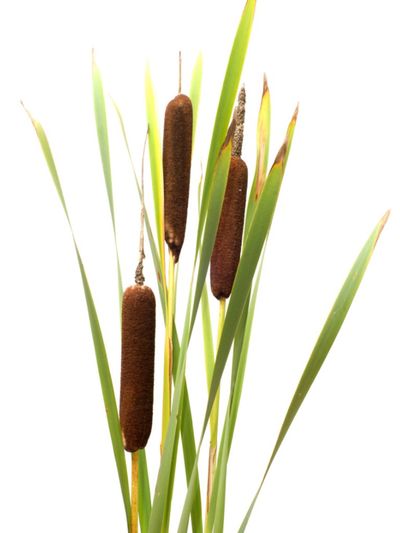Information About Potted Cattails
Cattails will spread rapidly in the correct situation, which is why you see them spread out in a sea of leaves and cone-like catkins. Growing cattails in pots will prevent them from invading other areas of the pond or garden. Potted cattails keep the rampant rhizomes from extending to unwanted areas. Since native varieties can get up to 6 feet (1.8 m.) in height, dwarf varieties are available which work better in container water gardens. Container grown cattail plants are available online or at pond and water garden supply centers. They come as rhizome starts or already sprouted in permeable baskets.
How to Grow Cattail in Containers
This bog plant is suitable for USDA zones 3 to 9 and can be brought indoors in containers to overwinter if necessary. The plants perform best in full sun to partial shade in soggy soil or up to 12 inches (30 cm.) of water. The cattail starts you can purchase may be bare root, in water garden baskets or sprouted in shallow pots. Shipped plants take a while to take off and may take a season or two before you see the summer catkins that are such a recognizable aspect of these water plants. Start growing cattails in pots in spring when ambient temperatures have warmed to 60 F. (15 C.), or sit them in water indoors to get the rhizomes to sprout then move them outdoors.
Container Cattail Care
Cattails grow rapidly and will start to sprout as soon as they are installed and conditions warm outside. Plant them in 1-gallon containers, which are stout and not readily breakable. They have to contain the rhizomes as they develop and grow. Submerge the pot in water up to the rim or alternately, use a webbed water garden basket which holds the rhizomes suspended inside. Container grown cattail plants need little care once they establish. In colder climates, the foliage dies back so you should cut the dead leaves away to make room for new growth in spring. The catkins disperse fuzzy white seeds in fall. If you wish to prevent spread of the plant by this method, cut off the catkins as they loosen and begin to dry and form seed. Fertilize in early spring with a balanced liquid fertilizer or water plant food. Once every three years, remove the rhizomes and cut the plant into sections. You can replant the sections for new plants and share them with other water garden lovers.
